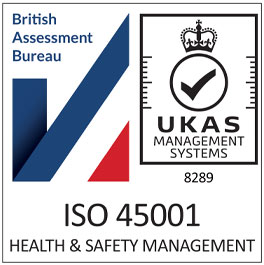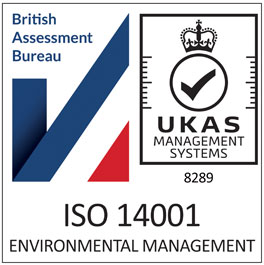
Slicker, Smoother, Smarter
In our previous article we looked at how reduced economic activity or enforced restrictions to your operation may in some cases be an opportunity to re-evaluate your approach to the people that make your business what it is.
We recommended that carrying out a properly structured feedback-gathering exercise with staff while their workload may be reduced across the board could well offer up crucial insight that helps your team evolve and develop in the long-term. We also looked at how restructuring your supplier network to incorporate essential cover for when logistical uncertainty strikes might just be your saviour when your own customers need vital support.
In this second part, we explore two more key areas that tend to become easier to analyse when day-to-day working life has the brakes applied: both of these revolve around becoming more efficient and the knock-on effect this has to wider commercial goals.
Streamline your processes
In the real world and in everyday workplaces, it’s common for processes to become more labour intensive, convoluted and wasteful over time, rather than the other way round. Conversely, with operational teams usually working at full capacity, we can rarely find the time to step back and evaluate daily habits, workflows and procedures in order to identify what can realistically be improved.
In fact, as time goes by it’s likely that imperfect ways of working become even more entrenched, weaving themselves into the very fabric of a business. How many times have we heard the phrase ‘but we’ve always done it this way’ when we enquire about a particular team’s working methods that don’t seem all that logical or well thought-through?

However, restrictions to your usual working practices and outputs may offer the perfect opportunity to stop, breathe and survey the lay of the land. It involves being systematic – fastidious, even – but analysing the exact sequences and steps that staff follow in order to complete their everyday tasks may unearth hugely valuable insights. For example:
-
- Are commonly used tools stored far away from workstations, on the other side of the factory?
- Does the finance team print documents off to be manually signed and then scanned back into electronic form?
- Are sales staff spending their days travelling from new prospect to new prospect rather than following up on existing leads and converting them into paying clients?
- Is your most experienced fabricator spending time on apprentice-level tasks?
Whether we expect to find them or not, efficiency savings of all sizes are there to be discovered within every organisation. The cumulative effect of shortening a sequence here or removing a human input there can bring about profound changes in not only costs but also less tangible – but no less important – aspects.
For example, employee efficiency is strongly linked to job satisfaction, which in turn can have a drastic effect on staff morale and wellbeing – further improving efficiency and productivity in a positive feedback loop. These are human resource factors that carry huge financial implications when amplified across a full business. In reality, few people long to work in an inefficient job where a large proportion of their effort goes to waste, so if process improvement at first appears to be a cold, clinical exercise, remember that there will almost always be a living, breathing person at some point along the chain; one whos job will become more fruitful and rewarding as a result.
Ditigise your environment
Whilst there are many aspects of working life that have inevitably been caught by the dragnet that is the digital revolution (when was the last time you put a paper letter into a filing cabinet?) some surprisingly important elements of businesses can still be left behind in a dusty cupboard.
If certain areas have fallen to the wayside when it comes to being online and accessible, the rest of your operation may well suffer as a whole – including those sections that have already strode forward and embraced the electronic. Nothing within an organisation exists within a vacuum, so it is in fact more advantageous to raise the overall baseline of digital integration across an entire business than it is to allow one particular department to disappear into a blur of ones and zeros in complete isolation.

Firstly, one of the more obvious sections of any business to digitise is of course your data itself. Customers, sales, orders, contracts, designs; any and all internal documentation is worth far more than the space it occupies. Without an accurate, centralised location in which to house this architecture of your company, the risks are numerous:
- How do you know that your various teams and departments are all working to a certain level of efficiency, where juggling paperwork is no longer a drain on time and effort?
- How easy would it be to profitably scale the business up considering its current state of digital efficiency?
- How much control do you have over the information security of your organisation, if the record of your records is patchy at best?
The unavoidable fact is that moving the majority of your business operation to an online space provides unparalleled levels of transparency, security, reliability and auditability. That new quote for a lucrative prospect takes minutes rather than hours; production time starts to make money rather than squander it; employee development becomes an enjoyably purposeful experience instead of an endless trawl through meaningless paperwork.
Secondly, without your data being converted into a cloud-based environment you could be missing out on untapped commercial potential. Data is knowledge, and the ability to process and analyse that data means uncovering insights that could address weak spots or identify new opportunities.
- What are you selling most of, to whom, and why? Could they want more of this, or a different form of it? What are they saying about it to others?
- When do they usually want it, and to what effect? What would happen if you were able to better be in the right place, at the right time?
- What channels can you harness to keep your customer relationships strong? Which of these works to what effect, and how should you manipulate each one?
- How do your own costs add up, and what picture do they paint of your business? Is there an elephant in the room or a hidden saving to unearth?
Data is only as valuable as the tangible decisions you can derive from it, and the first step in gathering information that can truly push your organisation forward is to ensure it is maintained centrally, securely and electronically. Embracing the digital isn’t to forget about the human side of your operation. On the contrary, it will in most cases unleash the full potential of your business.





